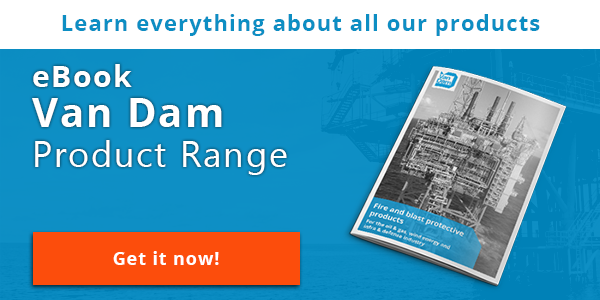Why and how do fire and blast solutions acquire a type approval


A type approval is an official confirmation that shows a fire rated product conforms to recognized industry standards in terms of regulatory, technical, safety and environmental requirements. The type approval is to be granted by a competent authority after a thorough process of independent design review and sample testing.
A type approved product ensures quality and proper operability at all times. This article will look at which steps to take to acquire a type approval.
Type approval: a step-by-step guide
There are a few important aspects to consider when establishing a fire product which complies to all rules and regulations and is granted a type approval to confirm this.
Step 1
Make sure that that all surface material, such as point, foil, fabric or surface veneers, applied on a specific product are properly tested on their reactions to fire.
Type approval certificates for surface materials shall include what substrate was applied for the test. The used surface material has to be explained in detail in terms of colour, organic contents and thickness of the products.
Step 2
The next step is to ensure that all insulation materials comply with the fire rating of the product. Each fire rating (“A” class, “B” class, “F” class, “H” class, and “J” class) might have different insulation materials, which have to be explained.
The type approval will include whether the insulation materials complies to the fire rating and that the thickness and density of the materials are reviewed and approved.
Step 3
Fire rated products are expected to be made of non-combustible material. These materials allow fire rated products to keep their fire resistant capabilities intact. According to IMO FTP in general, products made only of glass, concrete, ceramic products, natural stone, masonry units, common metals and metal alloys are considered as being non-combustible.
For the type approval certificate the organic content of these material will be specified and stated.
Step 4
The fire classification of the product is an indispensable part of the certification, because each classification has to comply with (slightly) different requirements. This is especially the case for “H” and “J” rated products since they have to provide an higher level of fire safety than “A”, “B” and “F” rated products. Also the restriction in the use of the product has to be included in the certification.
Step 5
Testing criteria and results are significant to determine that the fire rated product complies to the given fire rating and that it provides the right amount of safety necessary.
Fire tests need to be done in order to analyse and confirm the fire resistance of the products. The specific fire test procedures used in tests will therefore be clearly mentioned in the certification. Specifically for windows, the side which was exposed to the heating condition during the test will be looked at. A reference to optional tests such as a hose stream test and/or a thermo radiation test will also be included in the certification.
Conclusion
If all of these steps are strictly followed, a fire rated product will be approved and may be installed. Installing approved products means that the safety and protection of people and equipment on oil & gas structures, wind structures and/or infra & defense structures will be maintained.
Download our eBook Van Dam Product Range to get to know more about all our type approved fire and blast rated solutions.






